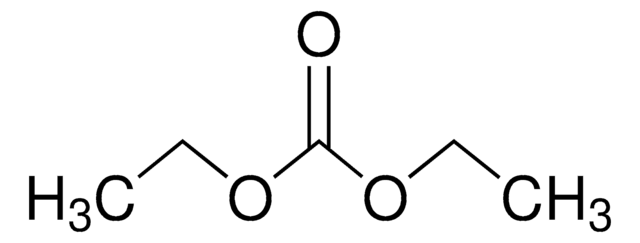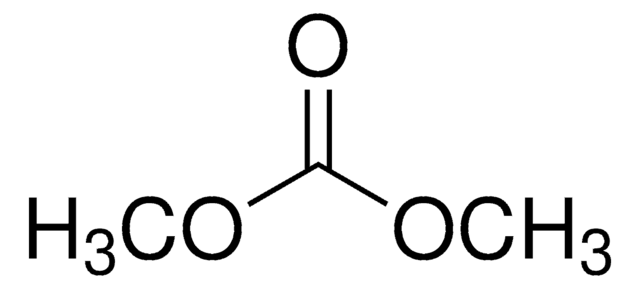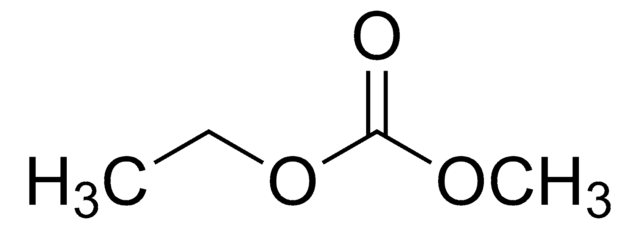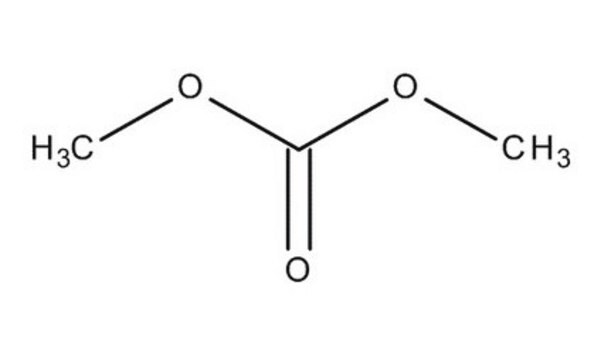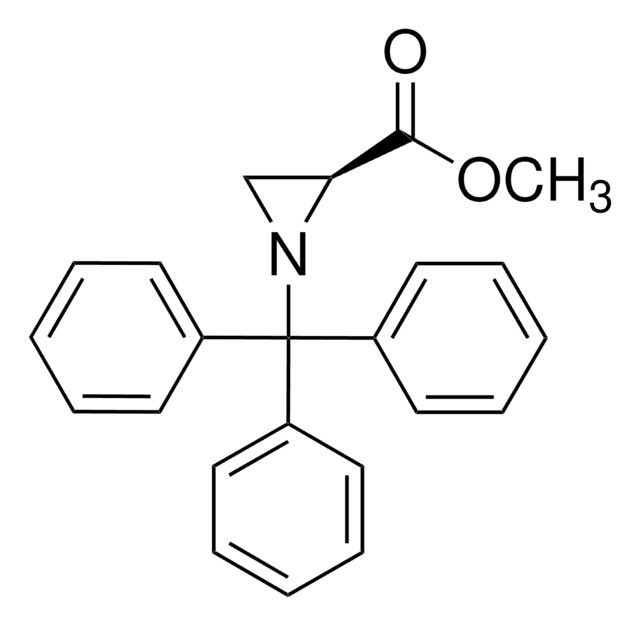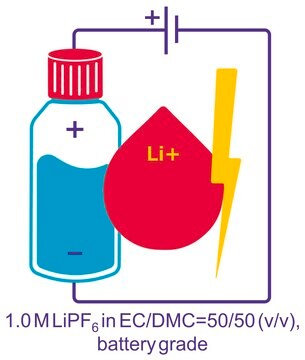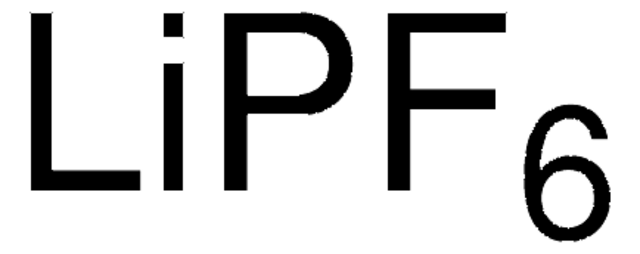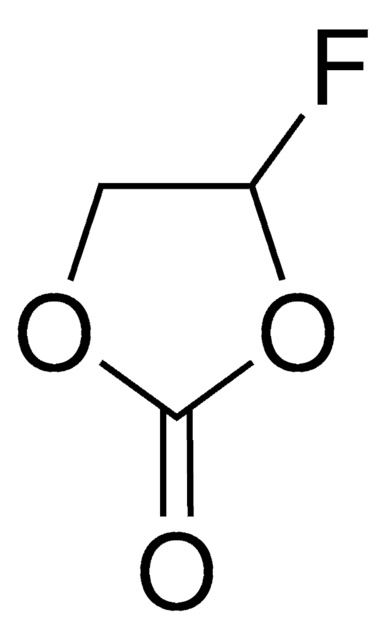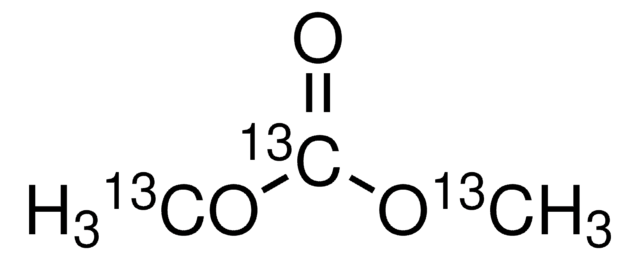517127
Dimethylcarbonat
anhydrous, ≥99%
Synonym(e):
DMC, Kohlensäure-Dimethylester
About This Item
Empfohlene Produkte
Qualität
anhydrous
Qualitätsniveau
Dampfdichte
3.1 (vs air)
Dampfdruck
18 mmHg ( 21.1 °C)
Assay
≥99%
Form
liquid
Expl.-Gr.
4.22-12.87 % (lit.)
Grünere Alternativprodukt-Eigenschaften
Less Hazardous Chemical Syntheses
Safer Solvents and Auxiliaries
Design for Degradation
Learn more about the Principles of Green Chemistry.
sustainability
Greener Alternative Product
Verunreinigungen
<0.002% water
<0.005% water (100mL pkg)
Farbe
APHA: <50
Brechungsindex
n20/D 1.368 (lit.)
bp
90 °C (lit.)
mp (Schmelzpunkt)
2-4 °C (lit.)
Dichte
1.069 g/mL at 25 °C (lit.)
Grünere Alternativprodukt-Kategorie
SMILES String
O=C(OC)OC
InChI
1S/C3H6O3/c1-5-3(4)6-2/h1-2H3
InChIKey
IEJIGPNLZYLLBP-UHFFFAOYSA-N
Suchen Sie nach ähnlichen Produkten? Aufrufen Leitfaden zum Produktvergleich
Allgemeine Beschreibung
Wir verpflichten uns, Ihnen umweltfreundlichere Alternativprodukte anzubieten, die ein oder mehrere der „12 Prinzipien der Grünen Chemie“ erfüllen. Dieses Produkt ist eine grünere Alternative zu herkömmlichen Lösungsmitteln und Chemikalien. Weitere Informationen finden Sie hier.
Anwendung
Leistungsmerkmale und Vorteile
Signalwort
Danger
H-Sätze
Gefahreneinstufungen
Flam. Liq. 2
Lagerklassenschlüssel
3 - Flammable liquids
WGK
WGK 1
Flammpunkt (°F)
60.8 °F - closed cup
Flammpunkt (°C)
16 °C - closed cup
Persönliche Schutzausrüstung
Eyeshields, Faceshields, Gloves, type ABEK (EN14387) respirator filter
Hier finden Sie alle aktuellen Versionen:
Besitzen Sie dieses Produkt bereits?
In der Dokumentenbibliothek finden Sie die Dokumentation zu den Produkten, die Sie kürzlich erworben haben.
Kunden haben sich ebenfalls angesehen
Artikel
Amide bonds are ubiquitous in both nature and industrial applications. They are vital to the structure and function of biological macromolecules and polymers. The importance of this functionality has resulted in numerous approaches to its formation, ranging from stoichiometric activation of carboxylic acids to more recent advances in catalytic amide bond formation.
The critical technical challenges associated with the commercialization of electric vehicle batteries include cost, performance, abuse tolerance, and lifespan.
Verwandter Inhalt
Why should you have to choose between solvents that are ecological and those that are reliable? Enjoy both at once with our biorenewable and greener solutions. Cyrene™ solvent is a new dipolar aprotic alternative to common REACH restricted solvents, such as N methyl-2-pyrrolidone (NMP) and Dimethylformamide (DMF).
Unser Team von Wissenschaftlern verfügt über Erfahrung in allen Forschungsbereichen einschließlich Life Science, Materialwissenschaften, chemischer Synthese, Chromatographie, Analytik und vielen mehr..
Setzen Sie sich mit dem technischen Dienst in Verbindung.